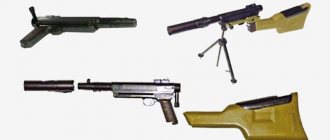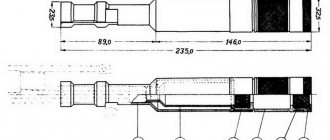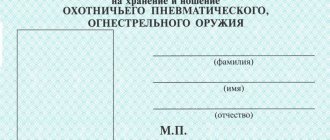At all times in the history of states, secret organizations played a huge role in the field of defense and security, which over time transformed into entire secret services. Over the years, the role of secret intelligence services in the work of the state machine grew stronger, the structure of organizations increased, and methods of work improved. Intelligence and counterintelligence methods are becoming the most important tools for achieving political goals. In many ways, it is the intelligence services that are responsible for starting or preventing armed conflicts. Obtaining secret information from abroad, control over the main state institutions within the political system and social and public life become the pillars of state security.
It is no exaggeration to say that the modern history of intelligence services would be incomplete without mentioning the KGB, the most secret service in the world. It was in the Soviet Union that the most powerful and largest intelligence service was created, which kept the whole world under control for almost half a century.
It is customary to speak of the USSR as the most totalitarian state in the history of the 20th century. A country that was constantly in a hostile foreign policy environment was forced to have not only powerful and combat-ready armed forces. A well-organized secret intelligence service becomes an effective instrument of the secret, silent war that has been ongoing since the very first day of the existence of the Soviet Union. Much has been written about the KGB, including studies by historians and memoirs of employees of the world's most secret intelligence agency.
Today, most of the information about the Soviet intelligence service is the result of state secret archives opened in the early 90s. An important piece of information about the methods and working styles of the Soviet intelligence service, the history of the KGB becomes clear only today, 26 years after the official cessation of the organization's activities. The limited information about the work of one of the most powerful intelligence services in the world is explained by the fact that the successor to the Soviet intelligence service today is the Russian Federal Security Service. This organization is the basis of state security of modern Russia, continuing the work of its predecessor. The KGB today is no longer remembered as a secret monster organization, but as the most productive and combat-ready foreign and domestic intelligence service.
Security – Cheka – OGPU – KGB – FSB
The history of the FSB includes a number of name changes and reorganizations after the Russian Revolution of 1917. Officially, it bore the name KGB for 46 years, from 1954 to 1991. Repressive organizations have long been part of the political structure of Russia. The functions of these organizations were significantly expanded compared to the role of the political police played by the secret police during the reign of Tsar Nicholas II.
In 1917, Vladimir Lenin created the Cheka from the remnants of the Tsarist secret police. This new organization, which eventually became the KGB, was responsible for a wide range of tasks, including espionage, counterintelligence, and isolating the Soviet Union from Western goods, news, and ideas. In 1991, the USSR collapsed, which led to the fragmentation of the Committee into many organizations, the largest of which is the FSB.
Gallery
- NKVD emblem
- Flag of the naval units of the border troops
- Postal envelope in honor of the 70th anniversary of the border troops of the KGB of the USSR, 1988
- Breastplate of the USSR Armed Forces for graduating from a military educational institution - higher military schools and military institutes
- Obelisk to border guards of all generations on Sennaya Square in Nizhny Novgorod
- Obelisk to the soldiers of the 10th NKVD division on Chekistov Square in Volgograd
History of the creation of the FSB of Russia
In 1880, Tsar Alexander II formed the Department for the Protection of Public Safety and Order, known as the "Okhranka". This organization at the end of the 19th - beginning of the 20th centuries. dealt with various radical groups inside Russia - spying on their members, infiltrating them and neutralizing them. With members of the secret police in the leadership of various revolutionary groups, the Tsar was constantly aware of events and could easily prevent any potential attack. For example, between 1908 and 1909, 4 out of 5 members of the St. Petersburg Bolshevik Party Committee were members of the Okhrana Branch. Nicholas II was so confident in his power over these groups that in November 1916 he ignored warnings of an imminent revolution.
After the February Democratic Revolution, Lenin and his Bolshevik Party secretly organized forces and carried out a coup on the second attempt. Lenin was a staunch supporter of terror and admired the Jacobins, the most radical French revolutionaries of 1790. He appointed Felix Dzerzhinsky as chairman of the People's Commissariat of Internal Affairs (NKVD), whose main purpose was to fight the enemies of the regime and prevent sabotage throughout the country. The history of the Cheka (FSB) began with its creation on December 20, 1917 to increase the efficiency of the NKVD. The Extraordinary Commission became the basis for the later KGB. Lenin appointed its chairman Dzerzhinsky, a Polish nobleman who spent 11 years in prison for terrorist activities against the Tsar.
Red Terror
Soon Iron Felix began making changes to the Cheka. The history of the FSB in December 1920 was marked by the transfer of the organization's headquarters from St. Petersburg to the former office of the All-Russian Insurance Company, where it remains to this day. The Cheka itself conducted the investigation, made arrests, tried itself, kept them in concentration camps and executed them.
The history of the FSB-Cheka includes the murder of more than 500,000 people between its creation in 1917 and its renaming in 1922. “Red terror” became common practice. From each village, the security officers took 20–30 hostages and held them until the peasants gave up all their food supplies. If this did not happen, the hostages were shot. Although this system proved effective in maintaining Lenin's ideology, in order to improve economic relations with the West, the Cheka was dissolved and replaced by an equally brutal organization, the State Political Directorate (GPU).
Initially, the GPU was under the jurisdiction of the NKVD and had less powers than the Cheka. With Lenin's support, Dzerzhinsky remained chairman and eventually regained his former power. With the adoption of the USSR Constitution in July 1923, the GPU was renamed OGPU, or United State Political Administration.
Holodomor
In 1924, Lenin died and was succeeded by Joseph Stalin. Dzerzhinsky, who supported him in the battle for power, retained his position. After the death of Iron Felix in 1926, Menzhinsky became the head of the OGPU. One of the main tasks of the organization at that time was to maintain order among Soviet citizens when Stalin turned 14 million peasant farms into collective farms. The bloody history of the FSB includes the following fact. To meet the need for foreign currency, the OGPU forcibly seized bread and grain to sell for export, creating a famine that killed more than five million people.
From Yagoda to Yezhov
In 1934, Menzhinsky died under mysterious circumstances and was replaced by Genrikh Yagoda, a pharmacist by training. Under his leadership, the OGPU began to conduct research in the field of biological and chemical weapons. Yagoda liked to conduct experiments on prisoners personally. He was shot under Stalin after confessing to the murder of Menzhinsky in order to lead the OGPU.
During the administration of Nikolai Yezhov, Yagoda's successor, terror in the USSR reached its apogee. The history of the FSB of the Russian Federation includes the following fact: in the period between 1936 and 1938. Three thousand OGPU employees alone were shot. Fearing Yezhov's growing influence, Stalin tried and executed him in 1938.
History of the creation of the FSB. KGB (1954-1991)
The State Security Committee was formed on March 13, 1954. Ivan Serov became its first chairman. The committee's initial task was to "cleanse" the government of Beria's people, who were trying to seize control of the USSR after Stalin's death.
Beginning in 1958, with the appointment of Alexander Shelepin as the new chairman of the KGB (Serov headed the Main Intelligence Directorate), Khrushchev introduced some changes to the operational functions of the Committee. His goal was to return the Soviet Union, and the KGB in particular, to a course similar to Dzerzhinsky's Cheka of the early 1920s. Western countries were identified as the main "enemies" of the USSR, including the US, UK and Japan. They had to be destabilized and weakened. As a result, under Khrushchev there was an increase in political assassinations and Soviet-sponsored terrorism.
At the same time, the KGB tried to change the repressive image created by the Stalinist dictatorship. Literary works were created extolling the KGB's heroic contribution to the preservation of the Soviet Union, and postage stamps were issued with Dzerzhinsky's image.
In December 1961, Shelepin was replaced by Vladimir Semichastny.
The era of Andropov
The history of the development of the FSB after the overthrow of Khrushchev on October 11, 1964 and the coming to power of Leonid Brezhnev takes a turn: Semichastny was dismissed from the post of KGB chairman. In May 1967, his place was taken by Yuri Andropov, head of the department for relations with socialist countries. He became the “long-living” chairman, lasting until May 1982.
The new leader continued the restructuring of the KGB begun by Khrushchev and Shelepin in the 1960s. He countered political, intellectual, national and religious opposition; expanded the system of labor camps and exiles; used psychiatry to combat dissent. In addition, he increased the collection of scientific and technical intelligence information and helped create an organizational infrastructure to finance and control the military, defense industry and aviation. Under Andropov's leadership, the KGB engaged in disinformation, falsified documents from Western intelligence services, financed campaigns in the Western press, and also expanded its network of agents abroad. In May 1982, Andropov became the leader of the CPSU, and chairmanship of the Committee passed to Vitaly Fedorchuk, the former chairman of the regional KGB in Ukraine.
Just seven months later the latter became Minister of the Interior. In December 1982, Viktor Chebrikov, first deputy. Fedorchuk, took the vacant seat. In October 1988, he was replaced by Vladimir Kryuchkov, head of the First Main Directorate of the KGB.
Kryuchkov served as KGB chairman until August 18, 1991, when he and seven other key members of the Soviet government launched a failed coup attempt against Mikhail Gorbachev, leader of the CPSU from 1985 until the party's dissolution on December 25, 1991.
directors
| KGB directors | Period |
| Felix Edmundovich Dzerzhinsky (Cheka/GPU/OGPU) | 1917–1926 |
| Vyacheslav Rudolfovich Menzhinsky (OGPU) | 1926–1934 |
| Guénrij Grigóryevich Yagoda (NKVD) | 1934–1936 |
| Nikolai Ivanovich Yezhov (NKVD) | 1936–1938 |
| Lavrenty Pavlovich Beria (NKVD) | 1938–1941 |
| Vsevolod Nikola Evgenievich Merkulov (NKGB) | 1941 (February–July) |
| Lavrenty Pavlovich Beria (NKVD) | 1941–1943 |
| Vsevolod Nikolaevich Merkulov (NKGB/MGB) | 1943–1946 |
| Abakumy Victor Semyon (MGB) | 1946–1951 |
| Semyon Denisovich Ignatiev (MGB) | 1951–1953 |
| Lavrenty Pavlovich Beria (MGB) | 1953 (March–June) |
| Sergei Nikiforovich Kruglov (MGB) | 1953–1954 |
| Ivan Aleksandrovich Serov (KGB) | 1954–1958 |
| Alexander Nikolaevich Shelepin (KGB) | 1958–1961 |
| Vladimir Efimovich Semichastny (KGB) | 1961–1967 |
| Yuri Vladimirovich Andropov (KGB) | 1967–1982 |
| Vitaly Vasilyevich Fedorchuk (KGB) | 1982 (May–December) |
| Viktor Mikhailovich Chebrikov (KGB) | 1982–1988 |
| Vladimir Aleksandrov Kryuchkov (KGB) | 1988–1991 |
| Vadim Viktorovich Bakatin (KGB) | 1991 (August–November) |
Organization and activities of the KGB
In 1954, the history of the KGB-FSB, the political police of the Soviet Union, began, which became officially known as the State Security Committee, and also acquired its basic organizational structure.
Then there was a significant downgrade of its status from a ministry to a committee. However, despite this, the KGB retained more autonomy than most other Soviet government departments and was independent of the Council of Ministers, the body that delegated power in the USSR. As a state committee, the KGB was formally subordinate to the Council of Ministers according to the Charter. The history of the FSB bodies is clouded by the fact that the Committee's Charter was never published, unlike most other Soviet laws. Many aspects of the organization, however, were made public in textbooks and individual cases of disclosure of state secrets.
The KGB had an umbrella structure, which consisted of similar committees in each of the 14 republics of the USSR. In the RSFSR, however, there was no regional organization. State security committees throughout Russia reported directly to the central authority in Moscow.
The leadership of the KGB was carried out by a chairman, approved by the Supreme Council on the proposal of the Politburo. He had 1-2 first and 4-6 just deputies. They, along with the heads of some departments, formed a board - a body that made important decisions regarding the actions of the organization.
The main tasks of the KGB covered 4 areas: protecting the state from foreign spies and agents, identifying and investigating political and economic crimes, protecting state borders and state secrets. To carry out these tasks, from 390 to 700 thousand people served in the six main departments.
References
- "KGB". Funded by BBVA. March 3, 2016
- Frattini, Eric. KGB History Center. Publisher: EDAF, ISBN 84-414-1708-3
- Advice and attack on the Bishop of Rome.
- FORMER AGENT DENIES KGB LIABILITY TO ATTACK ON JUAN PABLO II
- Matthew Day (18 October 2011). "Polish secret police: how and why Poles spied on their own people". Daily Telegraph
. Consultado el 19 de Enero de 2014. - Andrew, Christopher; Mitrokhin, Vasily (2000). Sword and Shield: The Mitrokhin Archive and the Secret History of the KGB. Basic books. p. 531. ISBN 978-0-465-00312-9.
- Pita, Rene (2008). Chemical Weapons: Science in the Hands of Evil. ISBN 978-84-96780-42-2.
Organizational structure
The 1st Main Directorate was responsible for all foreign operations and intelligence gathering. It consisted of several units, divided both by the operations performed (intelligence preparation, collection and analysis) and by geographical regions of the world. The specifics of the work required the selection of the most qualified personnel from all departments; the recruits had good academic performance, knew one or more languages, and also firmly believed in communist ideology.
The 2nd State Administration exercised internal political control over Soviet citizens and foreigners living in the USSR. This department prevented contacts between foreign diplomats and residents of the country; investigated political and economic crimes and maintained a network of informants; kept an eye on tourists and foreign students.
The 3rd Main Directorate was responsible for military counterintelligence and political supervision of the armed forces. It consisted of 12 departments that oversaw various military and paramilitary formations.
The 5th Main Directorate, together with the 2nd, dealt with internal security. Created in 1969 to combat political dissent, it was responsible for identifying and neutralizing opposition among religious organizations, national minorities and the intellectual elite (including the literary and artistic community).
The 8th Main Directorate was responsible for government communications. In particular, it monitored foreign communications, created ciphers used by KGB units, transmitted messages to agents abroad, and developed secure communications equipment.
The Main Directorate of the Border Troops was responsible for protecting borders on land and at sea. It was divided into 9 border regions, which covered 67 thousand km of the USSR borders. The main duties of the troops were to repel a potential attack; suppression of illegal cross-border movement of people, weapons, explosives, contraband and subversive literature; monitoring of Soviet and foreign ships.
In addition to these six GIs, there were at least several other directorates, smaller in size and scope:
- The 7th engaged in surveillance and provided personnel and technical equipment to monitor the activities of foreigners and suspicious Soviet citizens.
- The 9th provided security for key party leaders and their families at the Kremlin and other government facilities throughout the country.
- The 16th ensured the operation of telephone and radio communication lines used by government agencies.
As a vast and complex organization, the KGB, in addition to these departments, had an extensive apparatus that ensured the daily functioning of the organization. These are the personnel department, secretariat, technical support personnel, financial department, archives, administration department, as well as the party organization.
Content
- 1 Functions of the Border Troops of the KGB of the USSR
- 2 History 2.1 Pre-war period
- 2.2 Great Patriotic War 2.2.1 Composition of the Border Troops at the beginning of the war
- 2.2.2 Mobilization of Border and Internal Troops to the front
- 2.2.3 Contribution of the Border Troops to the Victory
- 2.3.1 Change of subordination of the Border Troops
- 2.3.3.1 The situation on the Soviet-Afghan border
- 3.1 Composition
Decline of the KGB
On August 18, 1991, Soviet leader Mikhail Gorbachev was visited at his government dacha on the Black Sea coast in Crimea by several conspirators, including Lieutenant General Yuri Plekhanov, head of the presidential security service, and Valery Boldin, Gorbachev's chief of staff, who felt that the party is under threat. They suggested that he either resign or renounce presidential powers in favor of Vice President Gennady Yanaev. Following Gorbachev's refusal, guards surrounded his home, preventing him from leaving or communicating with the outside world.
At the same time, in Moscow, the Alpha group of the 7th Directorate of the KGB received orders to attack the Russian parliament building and seize control of it. The unit was to conduct covert reconnaissance of the building on August 19th, and then infiltrate and capture it on August 20th and 21st. Contrary to the expectations of the members of the State Emergency Committee, the group led by Mikhail Golovatov decided not to carry out the operation. They delayed it until opposition forces led by Boris Yeltsin gathered to defend the building.
After the conspirators realized that the coup was poorly planned and would be unsuccessful, they tried to negotiate with Gorbachev, who was in their captivity. The President refused to meet with members of the State Emergency Committee. Some of the putschists were arrested and the coup was crushed.
The Gang of Eight included the vice president, the chairman of the KGB, the minister of defense, the prime minister, a member of the Defense Council, a member of the Supreme Council, the chairman of the Association of State-Owned Enterprises and the minister of internal affairs. Seven of them were arrested and convicted. The eighth shot himself in the head before his arrest.
After the coup attempt, Vladimir Kryuchkov, who had been chairman of the KGB for three years, was replaced by Vadim Bakatin, who had previously served as interior minister from 1988 to 1990, who then called for the dismantling of the State Security Committee. This position then became the reason for his removal and the appointment in his place of Boris Pugo, who subsequently supported the putsch.
And on October 24, 1991, the KGB of the USSR was officially dissolved.
Training for border troops
In various years, the training of officers for the border troops of the KGB of the USSR (NKVD/MGB) was carried out by the following educational institutions[1]:
- All-Union Institute for Advanced Training of Officers of the Border Troops of the KGB of the USSR (Moscow)
- Higher Border Command of the Order of the October Revolution, Red Banner School of the KGB of the USSR named after F. E. Dzerzhinsky (Alma-Ata)
- Higher Border Command of the Order of the October Revolution, Red Banner School of the KGB of the USSR named after Mossovet (Moscow)
- Kaliningrad Higher Border Command School
- Leningrad Higher Naval Border School
- Higher border military-political order of the October Revolution, Red Banner School of the KGB of the USSR named after K. E. Voroshilov (town Golitsyno)
- Oryol Higher Military Command School of Communications of the KGB of the USSR named after M. I. Kalinin
- Kharkov Higher Military School of Logistics of the Ministry of Internal Affairs of the USSR
- Military Institute of the KGB under the Council of Ministers of the USSR
- Makhachkala Border School of the USSR Ministry of State Security
- Kamenets-Podilsk School of Advanced Training for Officers
- Leningrad Military School of the NKVD Troops
- Saratov Military School of the NKVD Troops
- Ordzhonikidze Military School of the NKVD Troops
- Sebezh Special School of NKVD Troops
- Leningrad Suvorov Border Military School of the Ministry of Internal Affairs
Renaissance
Although the KGB formally ceased to exist, in 1991 it was divided into parts, which together performed the same functions as the Committee.
The Foreign Intelligence Service, created in October 1991, took over the tasks of the 1st Main Directorate for conducting foreign operations, collecting and analyzing intelligence.
The Federal Agency for Government Communications and Information was formed on the basis of the 8th Main Directorate and the 16th Directorate and is responsible for communications security and the transfer of intelligence data.
The 8–9 thousand military personnel who once made up the 9th Directorate were added to the Federal Security Service and the Presidential Security Service. These organizations are responsible for protecting the Kremlin and all important departments of the Russian Federation.
The history of the Russian FSB under its current name began after the Ministry of Security was disbanded in 1993. It included 75,000 people from the second, third and fifth GU. Responsible for internal security in the Russian Federation.
external reference
- Wikimedia Commons contains a media category for KGB
. - "History of creation [History of creation] (History of creation)" (in Russian). FSB of Russia (official website of the Russian secret service). Retrieved July 11, 2008
- “VChK - the beginning of the path [VChK - The beginning of the path] (VChK, the beginning of the path)” (in Russian). Retrieved July 11, 2008
- Wiktionary has definitions and other information about the KGB
.
| authoritative control |
|
- Data: Q80919
- Multimedia: KGB
Forward to the past…
After years of terror among Soviet citizens, who constantly feared brutal interrogations by KGB officers or being sentenced to work in the harsh conditions of labor camps, the Committee for State Security ceased to exist under its former name. However, many still live in fear of this cruel and repressive organization. The history of the Russian FSB is full of glaring facts. Writers whose works were considered anti-Soviet and who had never seen their books in print became victims of the 5th Main Directorate of the KGB. Families were torn apart as Committee agents arrested, tried, and sentenced millions of people to Siberian labor camps or death. Most of those convicted did not commit any crimes - they became victims of circumstances, being in the wrong place at the wrong time, or because of a careless remark made at home. Some of them were killed simply because KGB agents had to fulfill quotas, and if there weren't enough spies within their jurisdiction, they would simply take innocent people and torture them until they confessed to crimes they didn't commit.
It seemed that this nightmare was gone forever. But the story of the Cheka-KGB-FSB does not end there. The recently announced plans to create the Ministry of State Security on the basis of the SVR and the FSB bring to mind the Stalinist structure of the same name, which was designed to protect the interests of the ruling party.










